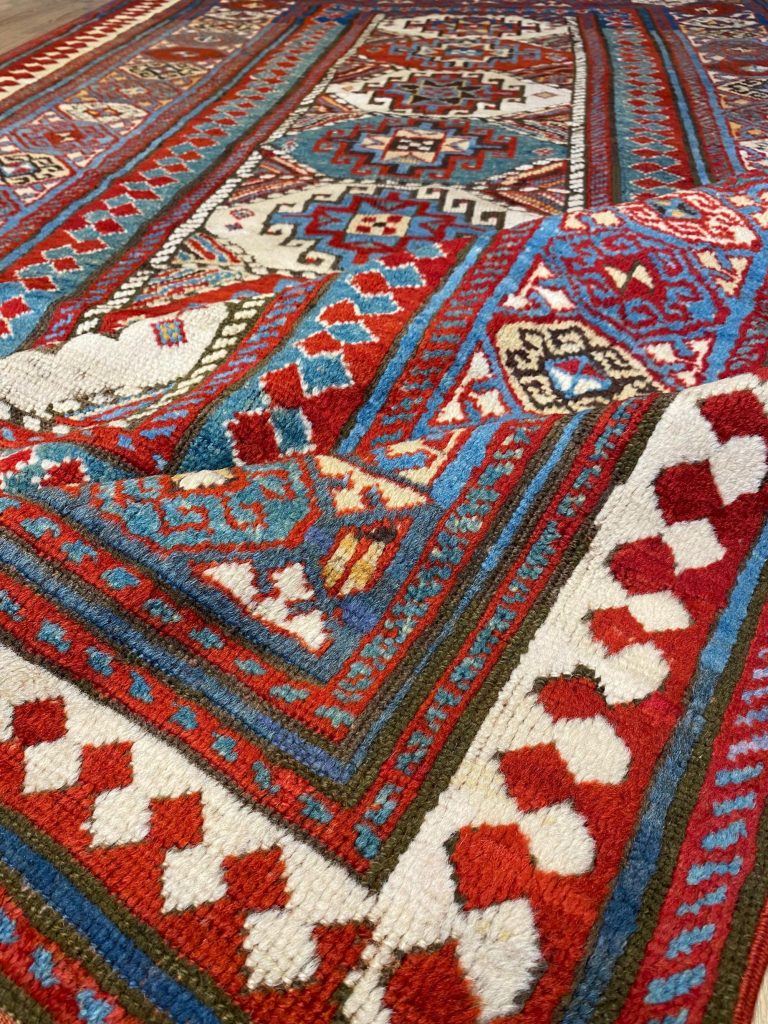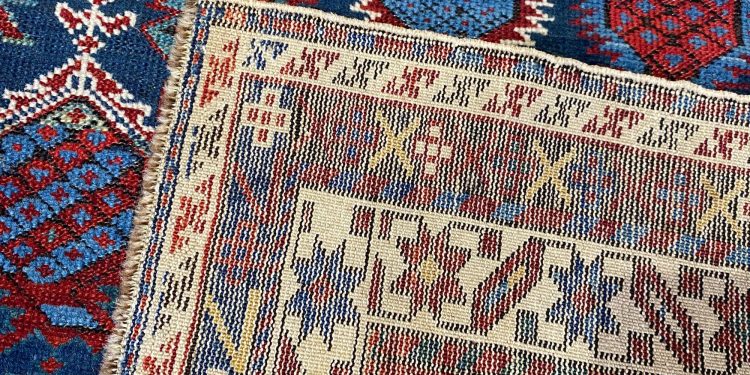Kazakhstan, throughout its history, has been home to great cultural diversity and bears the marks of ancient nomadic peoples. In this vast land, traditional handicrafts have reflected the way of life and worldview of the people. Kazakh carpets are one of the most significant elements of this cultural heritage, serving not only as aesthetic objects but also as symbols of a people’s past, beliefs, and relationship with nature. Every knot, every pattern, and every color of a Kazakh carpet tells a story, offering a glimpse into the soul of the Kazakh people and their connection to the earth.
Traditional Kazakh carpets have long carried the traces of a culture shaped by a nomadic lifestyle. These carpets are more than just items to adorn homes; they are cultural identifiers, rich in meaning and artistry. Each carpet is a representation of a family’s history, a community’s values, and the environment from which it emerged. The meticulous craftsmanship, striking colors, and significant motifs transform Kazakh carpets from mere decor into cultural treasures.
The history and cultural significance of Kazakh carpets
The history of Kazakh carpets is intertwined with the nomadic way of life. Historically, the Kazakh people were predominantly nomads who lived in the vast steppes. This lifestyle required practical solutions, and carpets became essential not only as aesthetic pieces but also as functional items. They served to decorate yurts, provide warmth, function as bedding, and sometimes even symbolized the wealth of a family. As the Kazakh people transitioned to a more settled way of life, carpets evolved from functional necessities into valuable cultural assets.

Each carpet represents more than just an object; it is a document of a family’s history, reflecting the impacts of wars, migrations, and social changes. Kazakh carpets often carry specific meanings for the families that create them, and each motif tells a story unique to that family. Thus, carpets are cultural expressions and serve as time capsules preserving the essence of Kazakh heritage.
The deep meanings of colors and motifs
The colors found in Kazakh carpets are not just visually appealing but are rich with meaning. Each color carries a symbol, representing various aspects of the Kazakh people’s lifestyle, relationship with nature, and beliefs. These colors represent far more than just aesthetic choices; they convey messages about the world and the Kazakh people’s connection to it.
Red: Frequently seen in Kazakh carpets, red symbolizes strength, protection, and prosperity. It also represents good fortune and joy, which are highly valued by the Kazakh people.
Blue: The color of the sky and water, blue symbolizes peace, harmony, and the connection between humans and nature. It also represents serenity and the balance within the universe.
Green: Green is the color of nature, agriculture, and life itself, symbolizing renewal and the Kazakh people’s deep connection to the land and its cycles.
Yellow and White: Yellow represents the warmth of the sun, energy, and vitality, while white stands for purity, goodness, and light. Together, these colors convey positivity, hope, and a bright future.
Kazakh carpets feature motifs that are deeply symbolic. The most common motifs include geometric patterns and nature-inspired elements. Symbols like the rose, crescent moon and star, double-headed eagle, waves, and crossed lines frequently appear in carpets. These motifs represent well-being, protection, and harmony with nature. Some carpets even depict animal figures, reflecting the Kazakh people’s close relationship with animals. For example, the horse is a central figure, representing strength and the important role of horses in both daily life and warfare.
Weaving techniques and materials
The techniques and materials used in the creation of Kazakh carpets are a testament to the region’s rich tradition of craftsmanship. Traditionally, Kazakh carpets are made from wool and silk. Wool is known for its durability and warmth, while silk represents luxury and refinement. Wool carpets are perfect for the cold steppes, providing insulation, while silk adds a touch of elegance and beauty to the design.

Kazakh carpets are mostly handwoven, meaning each piece is entirely unique. The weaving process requires great skill, patience, and attention to detail. The colors used in the carpets are often derived from natural dyes, contributing to the deep, vibrant hues that increase in beauty with age. Traditional Kazakh carpets are woven using the nomad technique, which involves meticulous craftsmanship and results in one-of-a-kind creations that last for generations.
Modern interpretations of Kazakh carpets
As time has passed, Kazakh carpets have evolved, maintaining their traditional elements while adapting to modern aesthetics and functionality. Traditional patterns and colors have been reinterpreted in contemporary designs, making Kazakh carpets highly valued not only by local communities but also by collectors and artists around the world. Today, Kazakh carpets are not just decorative objects but are revered as artistic masterpieces that transcend borders and time periods.
In conclusion, Kazakh carpets are more than mere art pieces; they are living expressions of a culture’s history, values, and worldview. Their rich colors, symbolic motifs, and intricate weaving techniques make them treasures of cultural heritage. These carpets continue to embody the spirit of the Kazakh people, connecting past and present while preserving a legacy that is both beautiful and meaningful.









